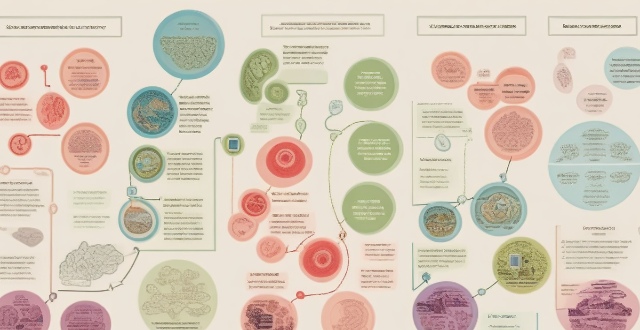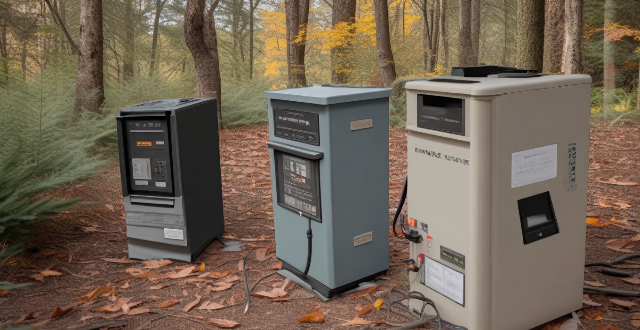Effectively Carbon

Can carbon credit systems effectively combat climate change ?
Carbon credit systems are a market-based approach to reducing greenhouse gas emissions by creating financial incentives for companies and individuals to reduce their carbon footprint. While these systems can effectively incentivize reduction of emissions, promote innovation, and support sustainable development, they also face challenges such as lack of regulation and standardization, inequality and access issues, and limited scope of impact. Carbon credit systems should be part of a broader strategy that includes government regulations, public education, and international cooperation to effectively combat climate change.

Can green bonds help fight climate change effectively ?
Green bonds, a type of fixed-income instrument, are issued to fund environmentally friendly projects that aim to reduce greenhouse gas emissions and promote sustainable development. They can effectively contribute to the fight against climate change by incentivizing renewable energy projects, supporting energy efficiency and conservation, investing in low-carbon infrastructure, promoting sustainable agriculture and forestry, and advancing research and development. However, challenges such as ensuring transparency and accountability, achieving scale and impact, integrating with broader climate strategies, and engaging diverse investors must be addressed to fully realize their potential. As the market for green bonds grows, they remain an important tool in combating climate change effectively.

How effective are reforestation efforts in offsetting carbon emissions ?
Reforestation efforts can effectively offset carbon emissions by sequestering carbon dioxide through photosynthesis. Factors influencing its effectiveness include the type of trees planted, location and soil quality, management practices, and timescale. Challenges such as saturation points, land availability, biodiversity concerns, and water resources impact also need to be considered. A balanced approach combining reforestation with other strategies is necessary for meaningful climate change mitigation.

What are the ethical considerations surrounding the use of carbon capture technology ?
Carbon capture technology is a method used to reduce carbon dioxide emissions, but it raises ethical concerns such as cost and accessibility, potential environmental impact, long-term effects, and accountability. It is important to ensure that the technology is implemented responsibly and equitably.

How does carbon offsetting work ?
Carbon offsetting works by assessing emissions, identifying suitable offsetting projects like renewable energy or reforestation, purchasing carbon credits from these projects, and continuously monitoring their effectiveness. This process helps reduce the overall carbon footprint of individuals or organizations while contributing to global efforts to combat climate change.

How does a carbon tax compare to other methods of reducing carbon emissions ?
The article discusses the comparison of a carbon tax to other methods of reducing carbon emissions. It explains what a carbon tax is and lists other methods such as renewable energy sources, energy efficiency, carbon capture and storage, and forest management. The article then compares these methods in terms of cost-effectiveness, implementation speed, public acceptance, and environmental impact. It concludes that while a carbon tax is effective, it should be part of a broader strategy including investments in renewable energy, energy efficiency measures, CCS technology, and forest management for the best results in combating climate change.

How can individuals participate in a carbon credit system ?
Carbon credit systems enable individuals to participate in reducing greenhouse gas emissions by buying, selling, or supporting carbon offsets. Individuals can offset their own carbon footprint by purchasing credits from verified projects, sell credits generated from their sustainable projects, or support the growth of carbon credit initiatives through advocacy and investment. Participation in these systems is a significant step towards combating climate change and fostering a more sustainable environment.

How do I manage my sports career effectively ?
Managing a sports career effectively involves physical training, mental preparation, strategic planning, lifestyle balance, health and wellness, networking and media relations, financial management, and continuous learning and self-improvement. Key elements include regular workouts, rest and recovery, nutrition, cross-training, visualization techniques, stress management, goal setting, mindfulness practices, long-term and short-term objectives, competition scheduling, sponsorship and partnerships, education and personal development, social life, hobbies and interests, regular check-ups, injury prevention, mental health support, building connections, media training, social media presence, budgeting, investments, tax planning, feedback, educational resources, and adaptability. By focusing on these areas, athletes can develop a comprehensive plan to manage their sports career effectively while maintaining a healthy and balanced lifestyle.

How effective is a carbon tax in reducing greenhouse gas emissions ?
A carbon tax is a fee on burning carbon-based fuels aimed at reducing greenhouse gas emissions. It creates economic incentives for behavior change, technology innovation, and revenue generation. The effectiveness depends on rate setting, equity concerns, compliance, political feasibility, and international coordination.

How does a carbon credit system work ?
A carbon credit system is a market-based approach that incentivizes companies, organizations, and individuals to reduce their greenhouse gas emissions. It works by setting emission reduction targets, generating carbon credits for verified emission reductions, allowing the trading of these credits, and using them for regulatory compliance or offsetting emissions. This system fosters economic efficiency, flexibility, and innovation while encouraging global cooperation on climate action. However, challenges such as ensuring permanence of reductions and maintaining system integrity must be addressed to ensure its effectiveness.

What is the future of carbon credit systems ?
The future of carbon credit systems is uncertain and depends on various factors such as policy decisions, technological advancements, public opinion, and market dynamics. Governments play a crucial role in shaping the future of these systems through regulations and enforcement. Technological innovations can both increase and decrease the value of carbon credits. Public opinion can drive demand for carbon credits, while market dynamics will shape the industry's evolution. Despite challenges, there are opportunities for growth and improvement in this important area of environmental protection.

How do carbon taxes affect businesses and consumers ?
Carbon taxes, a key tool for controlling greenhouse gas emissions, significantly impact businesses and consumers. They increase production costs and promote low-carbon transitions, affecting competitiveness and profit margins. For consumers, carbon taxes lead to higher prices and changes in consumption patterns, with varying economic effects across income levels. Despite challenges like competitiveness and price increases, these taxes encourage innovation and greener economies. Policymakers must balance these effects to ensure a fair transition to a low-carbon future.

How do I use Siri effectively to get things done on my iPhone ?
The article provides a comprehensive guide on how to use Siri effectively on iPhone. It outlines the steps to set up and enable Siri, lists common commands for performing tasks such as making phone calls, sending text messages, setting reminders, creating events, playing music, getting directions, checking the weather, searching the web, and opening apps. Additionally, it explains how to customize Siri by creating custom phrases for specific tasks and offers tips for using Siri more effectively, including speaking clearly and concisely, using natural language, taking advantage of Siri's learning capabilities, and integrating Siri with other apps and services.

Can environmental subsidy policies help reduce carbon emissions ?
Environmental subsidy policies can help reduce carbon emissions by promoting renewable energy, enhancing energy efficiency, supporting waste reduction initiatives, and funding research and development of carbon capture and storage technologies. However, these policies must be carefully designed and adequately funded to avoid market distortions and ensure long-term sustainability without creating dependence on government support.

What are the benefits of participating in the carbon trading market ?
Participating in the carbon trading market offers a multitude of benefits, which can be categorized into environmental, economic, and social aspects. Here are some of the key advantages: 1. **Environmental Benefits**: - Reduction in Greenhouse Gas Emissions: The primary goal of carbon trading is to reduce greenhouse gas emissions by creating financial incentives for companies to adopt cleaner technologies and practices. This helps to mitigate climate change and its associated impacts on ecosystems and biodiversity. - Promotion of Renewable Energy Sources: As companies strive to reduce their carbon footprint, they are more likely to invest in renewable energy sources such as solar, wind, and hydroelectric power. This shift towards green energy promotes sustainable development and reduces reliance on fossil fuels. - Enhanced Energy Efficiency: Carbon trading encourages businesses to improve their energy efficiency, leading to reduced energy consumption and lower operating costs. This results in fewer resources being used and less waste generated. 2. **Economic Benefits**: - Creation of New Industries and Jobs: The growth of the carbon trading market has led to the emergence of new industries focused on developing and implementing low-carbon technologies. These industries create job opportunities and contribute to economic growth. - Potential for Profitability: Companies that effectively manage their carbon emissions can generate additional revenue by selling excess emission allowances or credits. This provides an incentive for businesses to become more environmentally friendly while also increasing their profitability. - Access to International Markets: Participation in the carbon trading market allows companies to access global markets and take advantage of international trade opportunities related to low-carbon products and services. 3. **Social Benefits**: - Improved Public Health: By reducing air pollution caused by greenhouse gas emissions, carbon trading can lead to improved public health outcomes. This includes reductions in respiratory illnesses, heart disease, and other health issues associated with poor air quality. - Increased Awareness and Education: The existence of a carbon trading market raises public awareness about climate change and its implications. This increased understanding can drive behavioral changes among consumers, leading to more sustainable choices and lifestyles. - Community Engagement: Carbon trading projects often involve local communities, providing opportunities for community engagement and empowerment. This can lead to improved infrastructure, enhanced educational programs, and increased social cohesion within affected areas.

How are carbon credits traded and what is their market value ?
The article discusses the trading of carbon credits, which are tradable permits allowing holders to emit certain amounts of greenhouse gases. It explains how carbon credits are traded and their market value, outlining steps in their creation, verification, issuance, trading, and retirement. It also notes that the market value of carbon credits varies based on project type, location, and demand for offsets.

Can carbon sequestration be combined with renewable energy sources for maximum impact ?
This text discusses the potential of integrating carbon sequestration techniques with renewable energy sources to maximize their impact on mitigating climate change. It outlines various methods for carbon sequestration, such as afforestation, BECCS, DAC, and ocean sequestration. The text also describes different types of renewable energy, including solar, wind, hydroelectric, geothermal, and biomass energy. It suggests that combining these strategies can lead to synergistic effects, like integrated systems, improved energy efficiency, EVs powered by clean electricity, smart grids, and supportive public policies. Overall, the text advocates for a comprehensive approach that combines carbon sequestration and renewable energy sources to effectively combat climate change.

How can a carbon tax be designed to minimize negative impacts on businesses ?
A carbon tax is a fee on burning carbon-based fuels to reduce emissions and promote clean energy. To minimize its negative impact on businesses, consider gradual implementation, incentives for innovation, clear policy, revenue neutrality, support for affected industries, collaboration, and monitoring. This balances environmental goals with economic realities for sustainable development.

How can educational games be designed to effectively enhance learning ?
Designing educational games that effectively enhance learning involves a combination of educational theory, game design principles, and an understanding of the target audience. To create engaging and effective educational games, it is crucial to identify learning objectives, understand the target audience, incorporate educational theory, use engaging game mechanics, incorporate multimedia elements, provide opportunities for practice and repetition, include assessment and feedback mechanisms, foster collaboration and social interaction, and iterate and refine the game. By following these guidelines, you can design educational games that effectively enhance learning by engaging players, providing meaningful experiences, and fostering long-term retention of knowledge and skills.

How do carbon credits differ from carbon taxes ?
Carbon credits and carbon taxes are two distinct mechanisms that aim to reduce greenhouse gas emissions and mitigate climate change. While both strategies involve a financial incentive to encourage companies and individuals to reduce their carbon footprint, they operate differently in terms of their structure, implementation, and impact. Carbon credits represent a certificate or a tradable allowance proving that a specific amount of carbon dioxide (or its equivalent in other greenhouse gases) has been reduced, avoided, or sequestered by an emission-reducing project. Companies or countries can earn carbon credits by investing in projects that reduce emissions below a certain baseline, such as renewable energy projects or reforestation efforts. These credits can then be sold to entities that are looking to offset their own emissions or meet regulatory requirements. The price of carbon credits is determined by supply and demand in markets where they are traded. On the other hand, a carbon tax is a fee imposed on the burning of carbon-based fuels (coal, oil, gas) that are responsible for greenhouse gas emissions. Governments set a tax rate per ton of CO2 emitted, which is paid by companies and sometimes individuals using fossil fuels. The goal is to make polluting activities more expensive, thereby encouraging a shift towards cleaner alternatives. Carbon taxes are typically implemented at a national level through legislation. The revenue generated from the tax can be used to fund environmental initiatives or be returned to taxpayers in various ways. Key differences between carbon credits and carbon taxes include their regulatory vs. voluntary nature, direct vs. indirect incentives, and price certainty vs. market fluctuation. Carbon taxes offer price certainty for businesses when planning expenses, while carbon credit prices can fluctuate based on market demand and the success of emission reduction projects. In summary, both carbon credits and carbon taxes serve important roles in addressing climate change, but they do so through different means and with different outcomes.

How can physical education be integrated into the school curriculum effectively ?
Integrating physical education into the school curriculum effectively involves establishing clear objectives, incorporating PE into the daily schedule, offering a variety of activities, collaborating with other subject areas, encouraging student participation and choice, assessing progress, providing professional development opportunities, and creating a supportive environment. These strategies aim to promote student health, well-being, and academic performance by fostering physical fitness, motor skills, sportsmanship, and teamwork.

Are zinc-carbon batteries safe to use ?
Zinc-carbon batteries are a common type of battery used in many household devices, such as flashlights, remote controls, and toys. While they are generally safe to use, there are some precautions that should be taken to ensure their proper handling and disposal. These include avoiding short circuits by keeping the terminals from touching each other or any metal objects, storing them in a cool, dry place away from extreme temperatures and out of reach of children and pets, and disposing of them properly at a recycling center or store that accepts used batteries. Despite these precautions, zinc-carbon batteries offer several benefits, including being cost-effective, widely available, and having a long shelf life.

Are there any environmental risks associated with carbon sequestration techniques ?
The topic summary for the provided text is as follows: **Carbon Sequestration Techniques and Environmental Risks** - Carbon sequestration techniques aim to reduce greenhouse gas impact on climate change by capturing and storing CO2. - Different methods include geological storage, ocean storage, terrestrial sequestration, and enhanced weathering. - Each technique comes with potential environmental risks such as leakage, induced seismicity, ocean acidification, soil health impacts, biodiversity changes, and mineral extraction impacts. - Management and mitigation strategies involve monitoring, site selection, regulatory oversight, and public engagement to minimize these risks.

What are the benefits of carbon sequestration in reducing global warming ?
Carbon sequestration helps to reduce greenhouse gas emissions and stabilize climate conditions, leading to improved air quality and public health. It also promotes sustainable development by supporting renewable energy sources and creating green infrastructure. Additionally, carbon sequestration creates job opportunities and stimulates innovation in various industries. In the long term, it preserves biodiversity and prevents extreme weather events caused by climate change.

How can a carbon tax be implemented fairly ?
The text discusses the implementation of a fair carbon tax, which is a fee on burning carbon-based fuels to reduce emissions contributing to global warming. It suggests methods such as progressive taxation, revenue neutrality, renewable energy incentives, public education, phased implementation, and international cooperation to ensure the tax does not disproportionately affect low-income households or certain industries.

How do energy-efficient appliances help decrease carbon footprints ?
Energy-efficient appliances contribute to a smaller carbon footprint by reducing energy consumption, improving efficiency, and having a longer lifespan. Government incentives encourage the adoption of these eco-friendly options, leading to lower energy bills, increased comfort, environmental sustainability, reduced maintenance costs, and enhanced property value. Examples of energy-efficient appliances include refrigerators, washing machines, air conditioners, light bulbs, and water heaters. By choosing energy-efficient appliances, we can all contribute to a greener planet and a healthier future for generations to come.

What countries have successfully implemented a carbon tax ?
Countries that have successfully implemented a carbon tax include Canada, Sweden, Finland, Norway, Switzerland, and the UK. These countries have set different rates for their carbon taxes and have seen varying degrees of success in reducing greenhouse gas emissions. While there are challenges associated with implementing such a tax, these countries demonstrate that it can be an effective tool for achieving environmental goals.

How can carbon credit systems be improved to better address climate change ?
Enhancing Carbon Credit Systems for Effective Climate Change Mitigation. Carbon credit systems are financial instruments designed to reduce greenhouse gas emissions by providing economic incentives for emission reductions. While these systems have the potential to contribute significantly to climate change mitigation, they currently face several challenges that limit their effectiveness. Here's how we can improve them: 1. Strengthening Verification and Monitoring 2. Addressing Additionality and Leakage 3. Improving Permanence and Reversibility 4. Broadening Project Types and Incentives 5. Aligning with International Climate Goals 6. Expanding Market Access and Participation 7. Promoting Fairness and Justice

What are the economic implications of pursuing carbon neutrality for a country ?
Pursuing carbon neutrality has both positive and negative economic implications for a country, including job creation, innovation, energy independence, short-term costs, impacts on traditional industries, and potential carbon leakage.

Does a carbon tax lead to "carbon leakage" where companies move to areas without the tax ?
The article discusses the potential for "carbon leakage," where companies might relocate to regions without a carbon tax to avoid additional costs. It highlights economic impacts, geographical considerations, industry-specific impacts, and mitigating factors that could affect the outcome of implementing a carbon tax. The potential negative outcomes include job losses and environmental displacement, while positive outcomes could be innovation and efficiency improvements. The conclusion emphasizes the need for coordinated international efforts and support for affected industries to minimize leakage and promote sustainable practices.